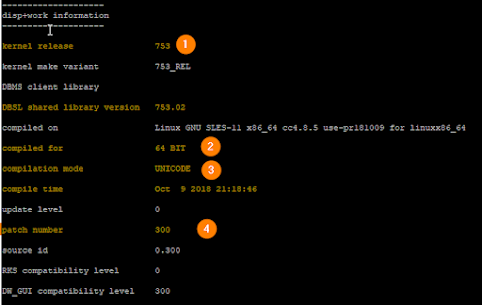SAP Kernel Upgrade
Step by step procedure for SAP Kernel Upgrade
Check the current Kernel Version
Option 1. You can do this from SAP GUI by looking into System > Status >
OR You can open transaction SM51 and click on Release Notes
Option 2. Run disp+work -V through sidadm user from OS level
Kernel version we have identified is 753 Patch 300
Download the Kernel and required archives from SAP Portal
1. Open SAP Portal through https://me.sap.com/
Under Support Pack and Patches -> Under Alphabetical Index {Follow the inline images}
Select SAP Kernel 7.53 Unicode - Download Kernel Part-I and II of same patch level for DB independent and Dependent
Download the database dependent same patch level archive by selecting the database
Now, We have SAPEXE_*.SAR and SAPEXEDB_*.SAR
Perform backup of directory
UNIX: /sapmnt/<SID>/exe/uc/linuxx86_64
WINDOWS: <DRIVE>:\usr\sap\<SID>\SYS\exe\uc\NTAMD64
Ex. F:\usr\sap\SID\SYS\exe\uc\NTAMD64
Extract Kernel Archives
Extract the files in some other directory and then copy all contents to actual kernel directory as mentioned above.
Option 1.
Create new directory anywhere and extract the archives. It is recommended to run this through SIDADM user.
SAPCAR -xvf <Download_Archive_Location>/"SAPEXE*.SAR" -R <NEWKERNEL_DIR>
Ex. SAPCAR -xvf /software/KERNEL/"SAPEXE*.SAR" -R /software/NEWKERNEL
then Copy extracted content to Kernel directory
cp -rvf /<DIR>/NEWKERNEL/* /sapmnt/<SID>/exe/uc/linuxx86_64/
Ex. cp -rvf /software/NEWKERNEL/* /sapmnt/<SID>/exe/uc/linuxx86_64/
Option 2.
Extract the archives directly into /sapmnt/<SID>/exe/uc/linuxx86_64/
Run this through SIDADM user.
Change directory to /sapmnt/<SID>/exe/uc/linuxx86_64/
cd /sapmnt/<SID>/exe/uc/linuxx86_64/
the extract the archives
SAPCAR -xvf /<Download_Archive_Location>/"SAPEXE*.SAR"
Ex. SAPCAR -xvf /software/KERNEL/"SAPEXE*.SAR"
## For windows you can extract and copy paste as required. Kernel directory for windows -
WINDOWS: <DRIVE>:\usr\sap\<SID>\SYS\exe\uc\NTAMD64
Post Activities
This is Good practice to fix the permission, Run the script to root user to fix the permission.
/usr/sap/<SID>/SYS/exe/run/saproot.sh <SID>
Ex. /usr/sap/PEP/SYS/exe/run/saproot.sh PEP














